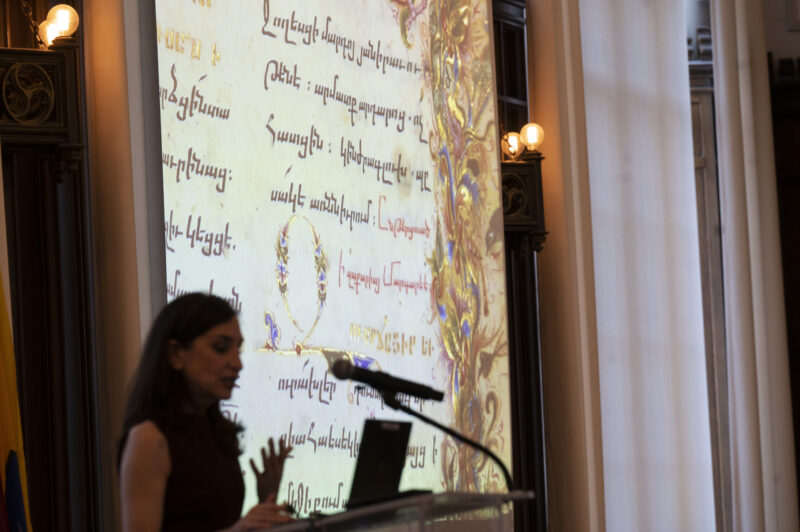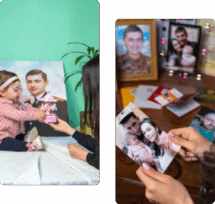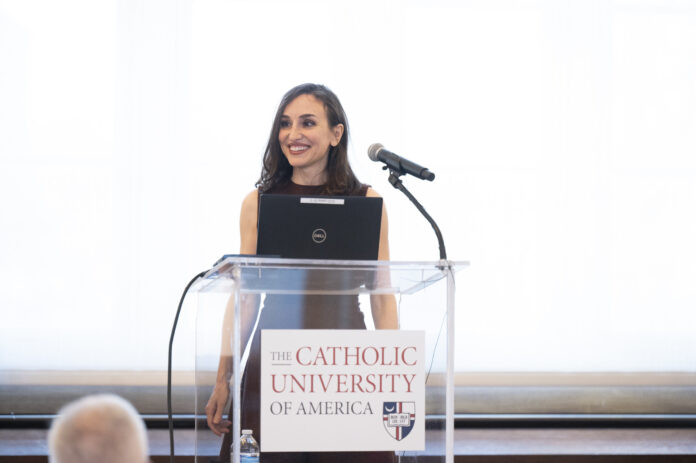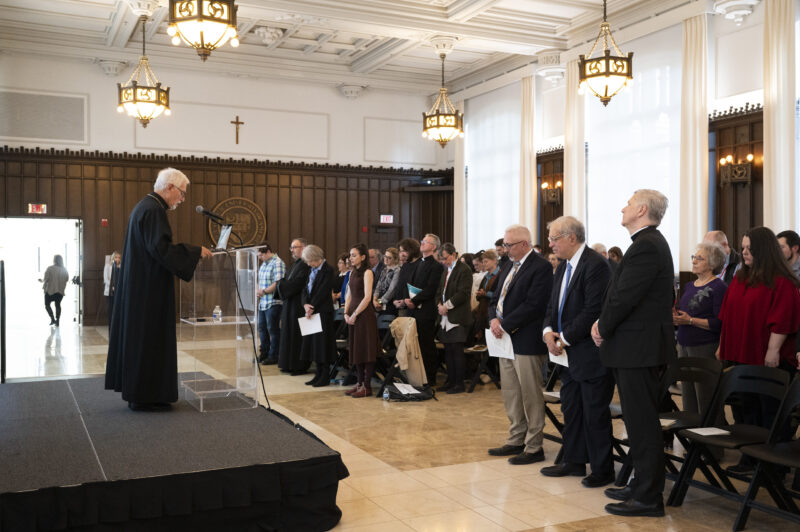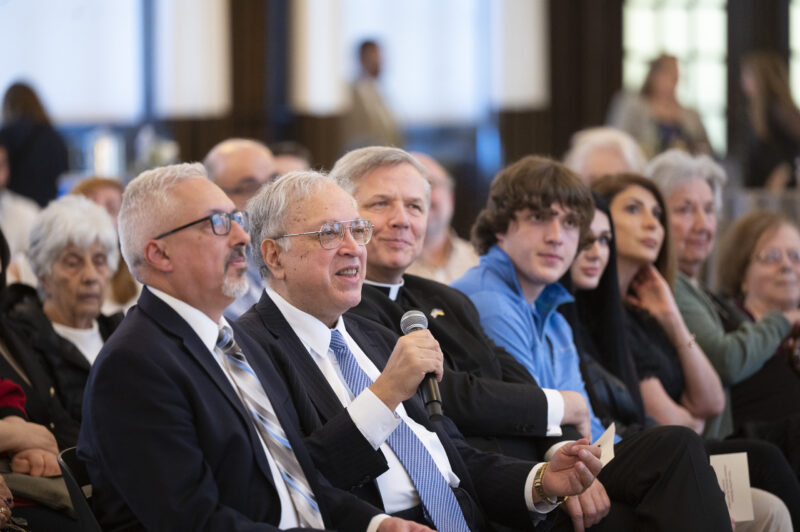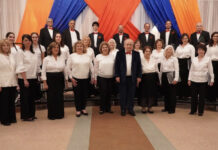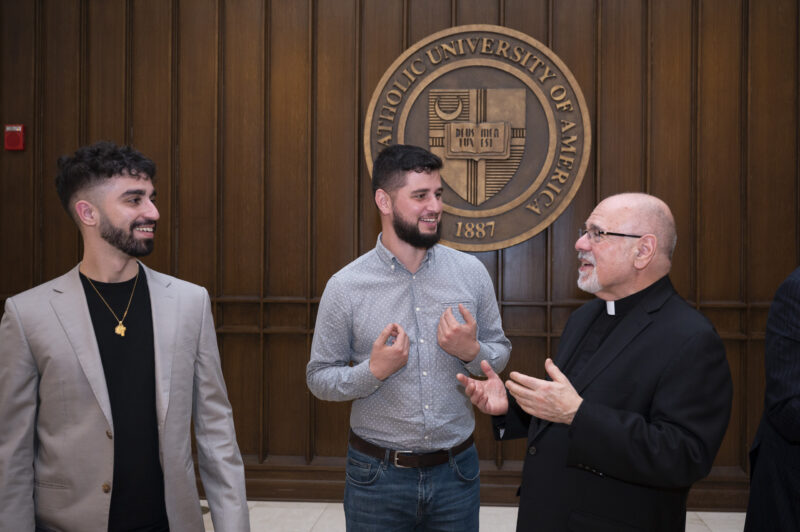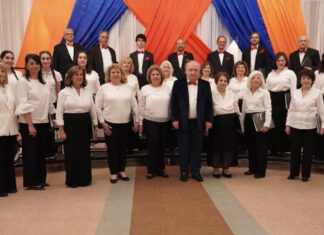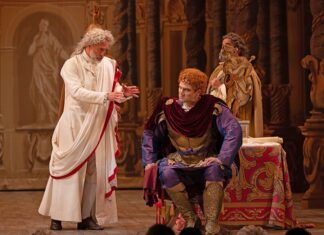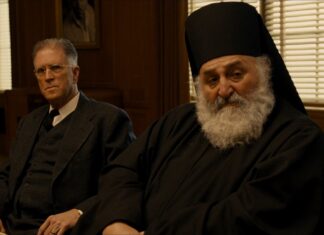WASHINGTON — Professor Christina Maranci, Harvard University Mashtots Professor of Armenian Studies, presented an engaging illustrated lecture titled “Armenia and the World in Art and Culture” on March 23. This was the inaugural program in the Grace & Paul Shahinian Armenian Christian Art and Culture Lecture Series. The Catholic University of America in Washington (CUA) hosted this lecture and one hundred and fifty scholars, students, and interested community members attended in person.
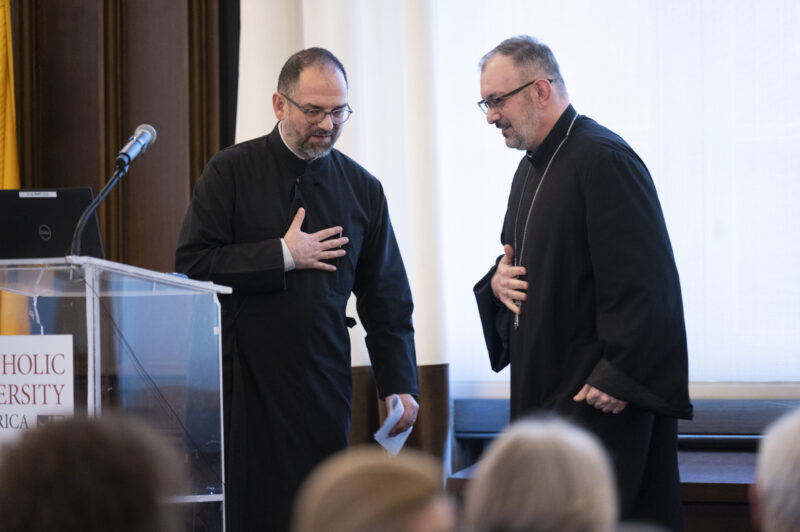
Professor Fr. Stefanos Alexopoulos, director of the Institute for Eastern Christianity at CUA, said that this series was established to support, explore and cultivate the study of Armenian art, architecture and culture by sharing with a wider audience the fruits of the research of renowned scholars. He added that it was funded by Dean Shahinian and declared that the university was “very grateful.”
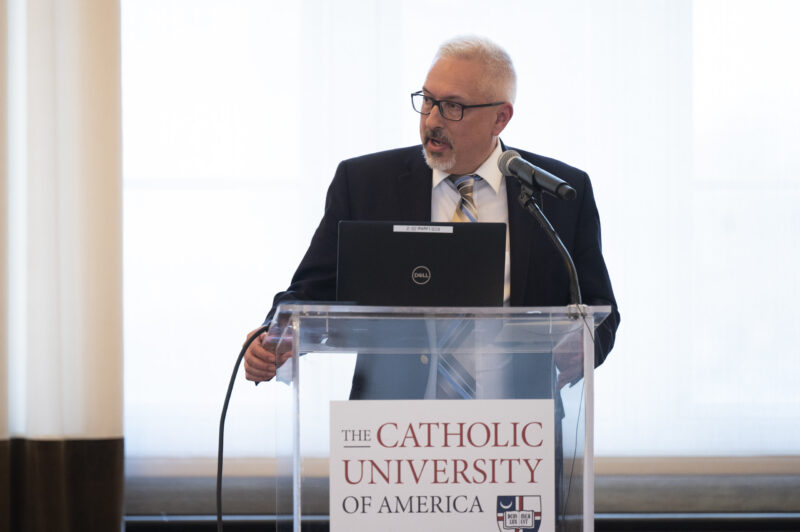
University Provost Aaron Dominguez described the history of Armenian studies at the university and historical relationships between the Catholic and Armenian communities. CUA Professor Robin Darling Young explained that Armenia was at the center of transcontinental trade routes from antiquity onwards and has made enormous contributions to both surrounding and distant cultures. She introduced Maranci warmly and commended her for working to protect Armenian churches and other monuments from serious danger.
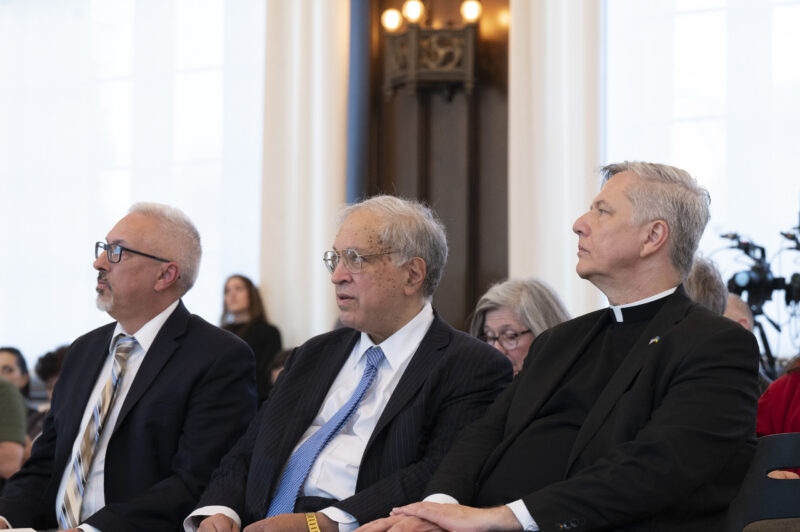
Maranci explained that Armenia’s pre-modern art and texts show its connectedness with the larger world and cited interesting examples. Armenia was not an isolated country. She said that studying its art is important because of what it can tell us about Armenia and about the world.
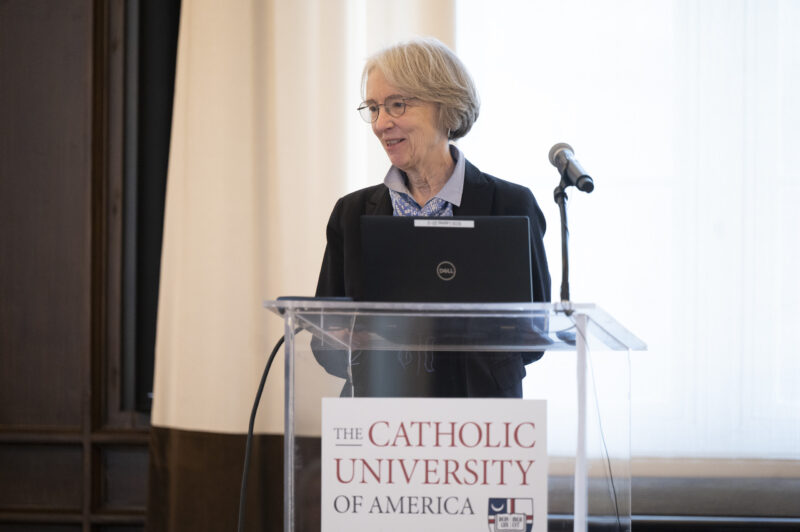
She showed a ground plan of the seventh century church of Zvartnots. She described its “extraordinary design” – a double-aisle tetraconch with a rotunda on the outside – as the first of its kind. Its inscriptions were written in the Greek and Armenian languages and its features have been compared with Hagia Sophia and Syrian and Mesopotamian buildings.
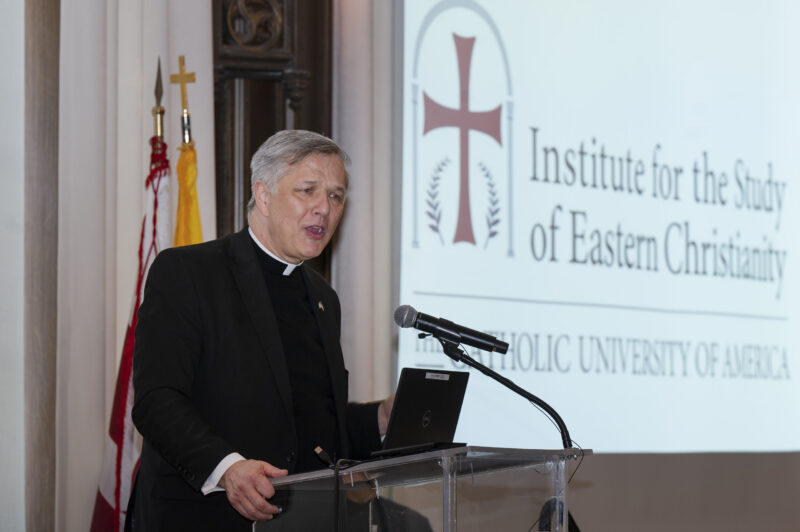
She added, “It’s not just a building connected with Hagia Sofia, Syria or Mesopotamia. It’s not just understandable from the Armenian tradition. It did a lot of new things. It speaks very much to the moment in which it was built.” She concluded that Zvartnots was doing something special in drawing together different traditions to make a statement.
